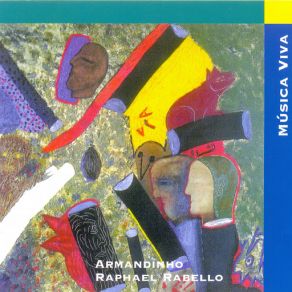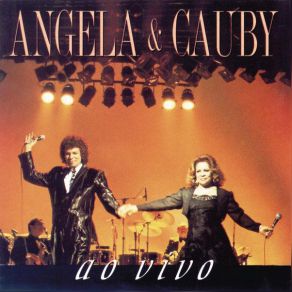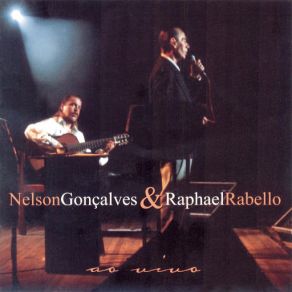Raphael Rabello
Wikimp3 information about the music of Raphael Rabello. On our website we have 9 albums and 2 collections of artist Raphael Rabello. You can find useful information and download songs of this artist. We also know that Raphael Rabello represents Bossanova genres.
Biography
[Edit]In spite of his short life, Raphael Rabello was acknowledged internationally by his virtuosity. His mastery can be checked out on 16 released solo albums, on more than 400 he recorded as a sideman, and several solo tracks still unreleased. He worked with such artists as Paulo Moura, Elizete Cardoso, Turíbio Santos, Canhoto da Paraíba, and Paul Simon among many others. A flamenco-style proponent (he played with his fingertips, not with fingernails) within the Brazilian popular roots and always foreseeing the classical tradition on the horizon, he was celebrated by many first-class musicians and critics worldwide. Pat Metheny, for example, said about him: "He is the most prominent guitarist of our generation and one of the greatest of all times."
His grandfather, José de Queirós Batista, a violonista himself, was a strong influence in Rabello's family, heavily bent over the musical side. Rabello's sisters, Luciana and Amélia, are also professional distinguished musicians, a cavaquinista and a singer, respectively. Rabello, a self-taught violonista, started to learn music at age seven. Influenced by Dino Sete Cordas, he was taught later by Meira (Jayme Florêncio). At 12, he was already playing professionally. At 14, he formed his first choro regional, Os Carioquinhas, in which Luciana also took part. In 1977, Os Carioquinhas recorded their first LP, Os Carioquinhas no Choro (Som Livre), playing the seven-stringed Brazilian guitar. In 1979, together with mandolin virtuose Joel do Nascimento, he formed the group Camerata Carioca. The group specialized in playing music in the choro tradition and aimed at a synthesis of the erudite sophistication that was displayed both by the group's name and by its members' technical proficiency. The group caught the attention of distinguished composer, arranger, and orchestrator Radamés Gnatalli, who was personally dedicated to put down any segregation between classical tradition and popular Brazilian music. It was natural that Rabello would later become one of the main interpreters of Radamés' violão production. In 1984, he and Radamés recorded the album Tributo a Garoto through Funarte, with Garoto's compositions and Gnatalli's "Concertino No. 2." In that same year, he recorded for Polygram his first solo album, Rafael Sete Cordas, with compositions by Tom Jobim, Augustin Barrios, Jacó do Bandolim, João Pernambuco, and others. In 1986, he presented himself, together with singer Ney Matogrosso, in the show Pescador de Pérolas, which, out of the solid acclamation received, became a national tour and a recorded album, Pescador de Pérolas. In that same year, Rabello recorded Rafael Rabelo Interpreta Radamés Gnatalli through Vision. In 1988, he recorded Rafael Rabello, again for Vision. In 1989, he broke his right arm in a car accident, but that didn't stop him from accompanying Elizete Cardoso just four months later in her show Todo Sentimento, released in 1991 as a CD through BMG/RCA. In 1990, his duet with Ney Matogrosso yielded another show, À Flor da Pele, recorded and released by Som Livre as À Flor da Pele. In 1991, he recorded a great album with his first idol, Dino Sete Cordas. The album, through Caju Music, brought his name as Raphael for marketing purposes. Raphael Rabello & Dino Sete Cordas has several classic choros by João Pernambuco, Pixinguinha, and Ernesto Nazareth; sambas by Noel Rosa and Lamartine Babo; and the virtuosistic valse "Desvairada," by Garoto. With Paulo Moura, he recorded the album Dois Irmãos in 1991, through Caju Music/Milestone, with sambas, choros, and Tom Jobim' valse "Luísa." This CD would be awarded with the Prêmio Sharp in the next year as Best Instrumental Album. But in the same year, Rabello was awarded with a Prêmio Sharp for his duo album with Carlão. In 1992, he released through BMG/RCA his album Todos os Tons, with his arrangements and transcriptions of Tom Jobim' compositions. The album had as guests Jobim himself, Paco de Lucia, Paulo Moura, Luiz Avelar, Nico Assumpção, and other distinguished musicians. In 1993, he recorded with Romero Lubambo for the album Shades of Rio (BMG/RCA). A more diversified mix, it has compositions by him, Dori Caymmi, Jobim, Ary Barroso, Pixinguinha, Gnattalli, and others, exploring not only the choro, but other languages such as samba-canção. In that same year, he recorded for the same label Delicatesse, with another choro master, Déo Rian, in which the only popular composition was by Jacó do Bandolim, all the rest being classical music. In 1994 and 1995, he was awarded again with a Prêmio Sharp as Best Soloist. In 1994, he displayed his arranging skills, transcribing important pieces recorded and/or composed by the virtuoso violonista Dilermando Reis for his own performing style. This album yielded him another Prêmio Sharp award as Best Instrumental Album.
In 1994, he moved to California, where he lectured at the Los Angeles Music University and also recorded two more albums there. In 1995, he released his Back to Life album in Los Angeles. He then returned to Brazil to engage in a project with a foundation maintained by the state bank Banco do Brasil. The project, entitled Orgulho do Brasil (Brazil's Pride), consisted of a series of records dedicated to several Brazilian composers. It began with the composer Capiba. This would be the last effort of Rabello's and he committed himself to it. Unfortunately, the Banco do Brasil Foundation decided to abandon the project just as it was almost finished, offering no explanation. A 1997 release, Em Concerto (With Armandinho) by Spotlight, was of a live recorded show of Rabello's and also brings another live show, by mandolinist Armandinho (and not a show with both of them, as the title suggests). It was unauthorized by Rabello while he was still alive as he thought it wasn't good enough to be released, due to technical problems. The project under which those shows was developed, Música Viva, was denounced by Rafael's sister Luciana (she was a regular Rabelo accompanist whenever he played or recorded with a regional). According to her, all musicians involved in that show, including her, not only hadn't authorized its release on CD, but also hadn't received any rights for it.
Title: Todos Os Tons
Artist: Raphael Rabello
Genre: Jazz, World Music, Latin, Pop, Instrumental, Bossanova, Instrumental
Title: Lamentos do Morro
Artist: Raphael Rabello
Genre: World Music, Latin, Instrumental, Instrumental
Title: Dois Irmãos / Dois Irmaos
Artist: Raphael Rabello
Genre: Jazz, World Music, Latin, Instrumental, Bossanova
Collections
Title: Best of Brazil
Title: Music for a New World
Genre: World Music
Featuring albums
Title: 30th Anniversary Collection: Complete Set (1986-2016)
Artist: Chesky Records
Genre: Jazz, Vocal Jazz, Bossanova
Title: Chesky 30th Anniversary Collection, Vol. 1 (1986-1995)
Artist: Various Artists
Genre: Jazz, World Music
Title: Chesky 30th Anniversary Collection: The Complete Set (1986-2016)
Artist: Various Artists
Genre: Jazz, World Music
Title: Cauby Peixoto - Série Aplauso / Cauby Peixoto - Serie Aplauso
Artist: Cauby Peixoto
Genre: Latin Folk

























